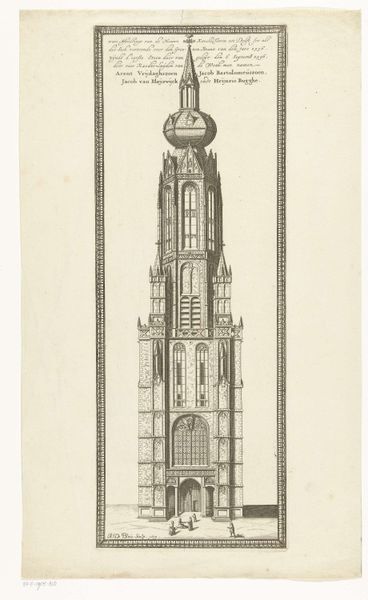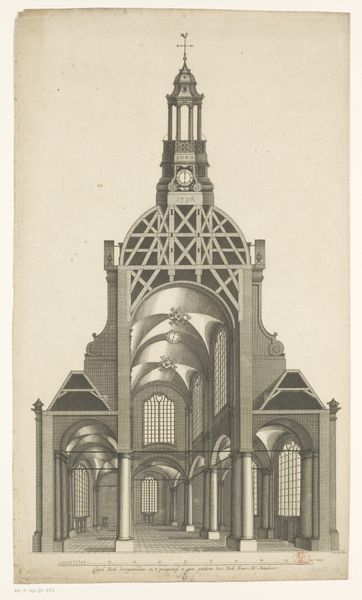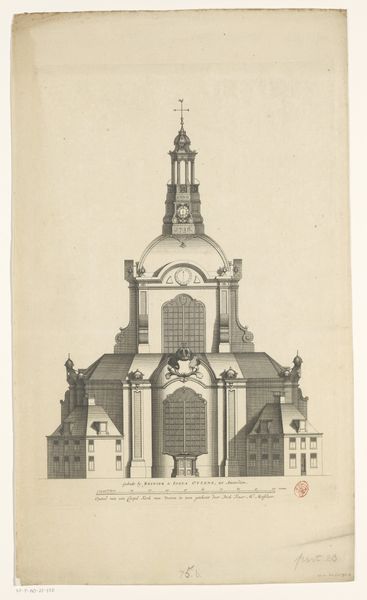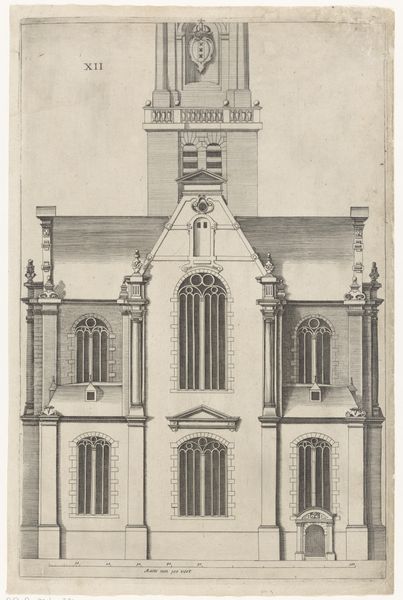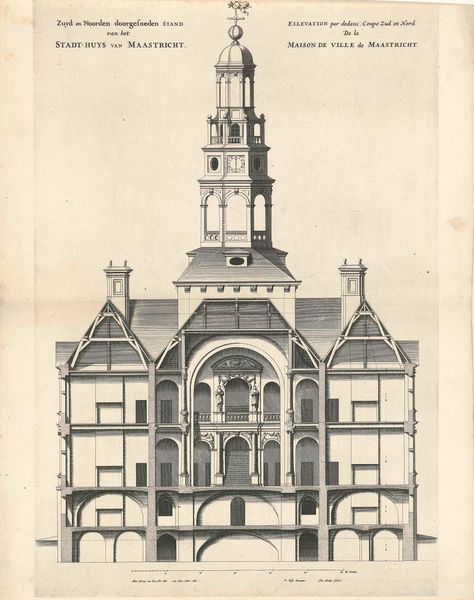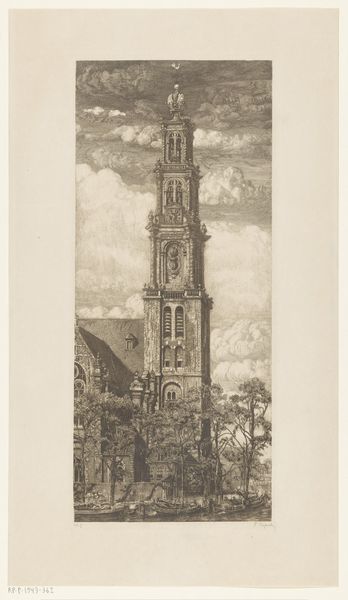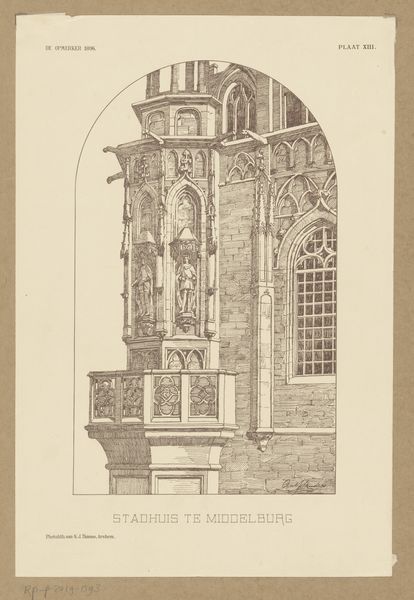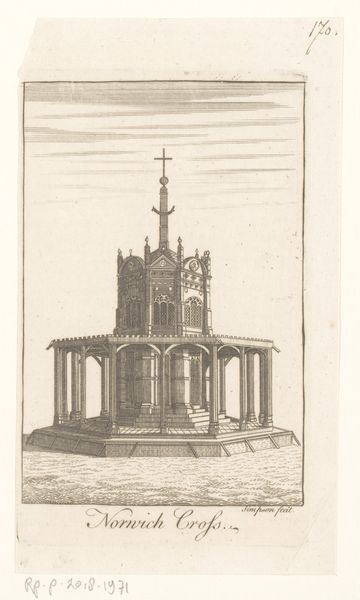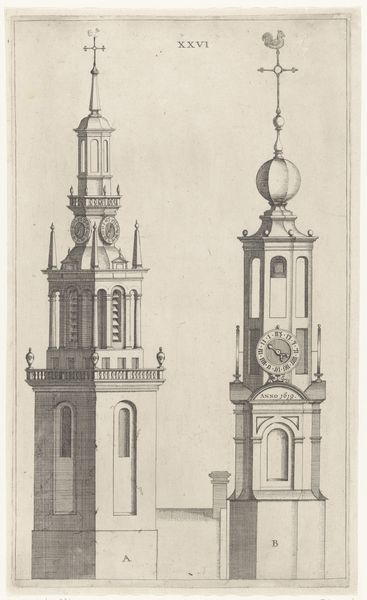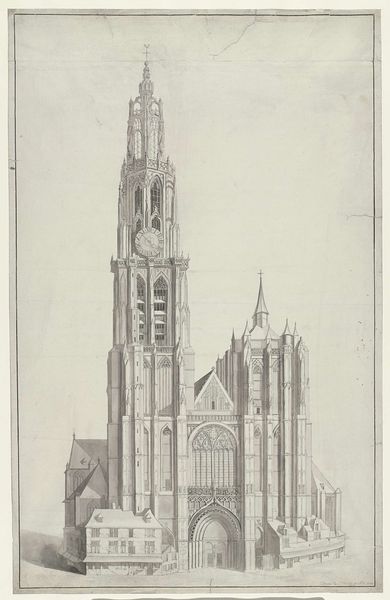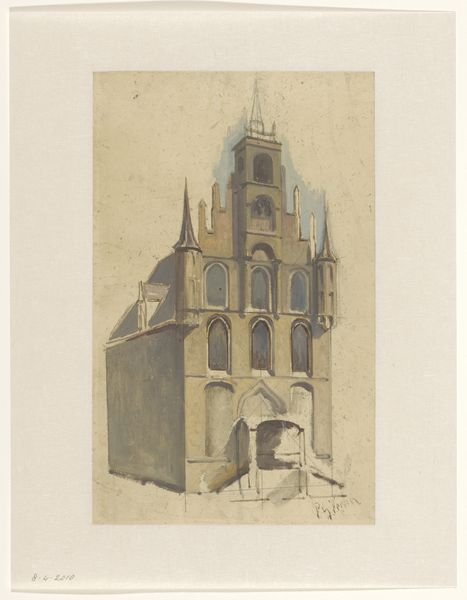
De toren van de Nieuwe Kerk te Delft, voor de brand van 1536 1679 - 1680
0:00
0:00
abrahamdeblois
Rijksmuseum
drawing, print, paper, ink, engraving, architecture
#
drawing
#
pen drawing
# print
#
landscape
#
paper
#
ink
#
geometric
#
cityscape
#
engraving
#
architecture
Dimensions: height 354 mm, width 133 mm
Copyright: Rijks Museum: Open Domain
Editor: So, here we have "The Tower of the New Church at Delft Before the Fire of 1536," a print made with pen and ink by Abraham de Blois around 1679-1680, currently housed at the Rijksmuseum. It strikes me as incredibly detailed, almost like a technical drawing, but with a certain somber feel, considering it depicts a church tower *before* a disaster. What stands out to you most about this piece? Curator: Disaster is always a fascinating muse, isn't it? What leaps out for me is the incredible sense of... longing, perhaps. De Blois wasn't just recording architecture; he was archiving a memory, a vanished version of Delft. Look at the lines, so precise yet somehow delicate. Do you see how he captures the light on the brickwork, the almost tangible weight of the stones? It’s like he's trying to hold onto something that’s already gone. Do you sense that? Editor: I see what you mean, that feeling of preservation. It's not just documentation; it's like a yearning. Does the printmaking technique add to that sense, perhaps by distancing the artist's hand, adding another layer of removal from the original subject? Curator: Exactly! The engraving process itself becomes a metaphor for the distance of time, a kind of mediated nostalgia. The lines are so deliberate, controlled. Almost like carefully etching a memory into something permanent before it fades completely. One might see it as a loving tribute to what was and can never be again. Editor: I hadn't thought of it that way. So, it's more than just a historical record; it's an emotional artifact as well. I'm definitely seeing it in a new light. Curator: Precisely. Art often resides not in what is depicted, but in what the depiction evokes. Now, when you look at this print, what story do *you* think it's trying to tell? Editor: Thanks to you, I now perceive the sad beauty of something remembered and missed. That contrast, of destruction and preservation, feels very powerful.
Comments
No comments
Be the first to comment and join the conversation on the ultimate creative platform.
